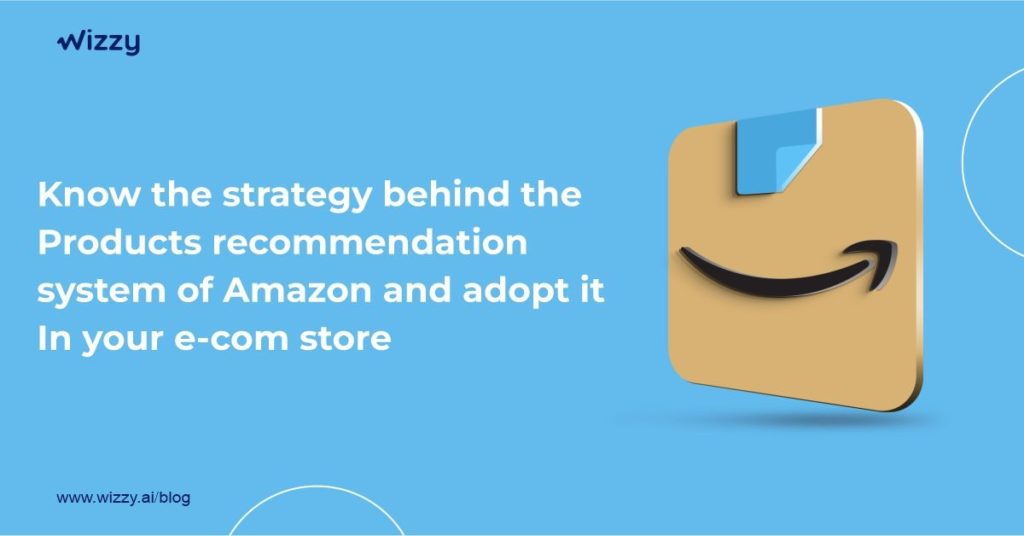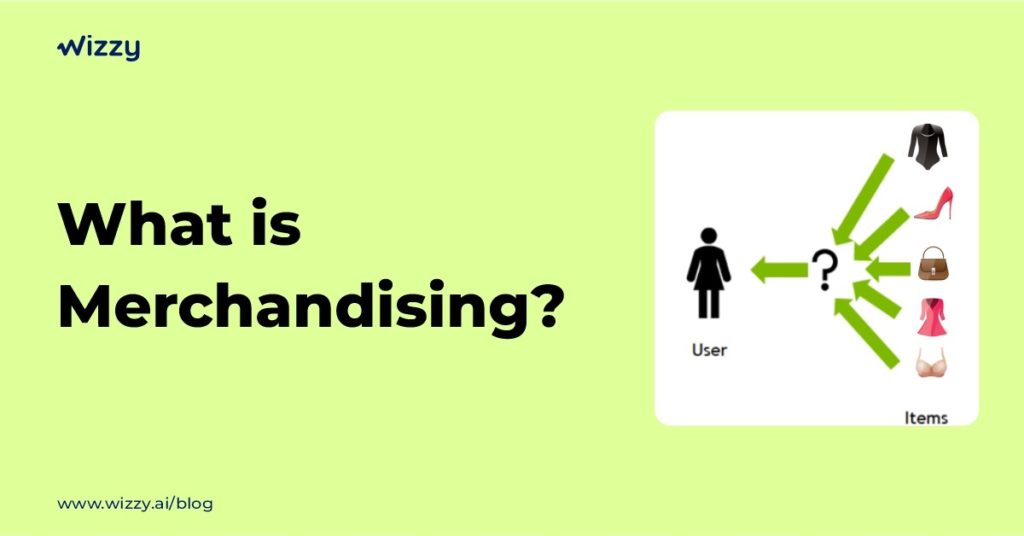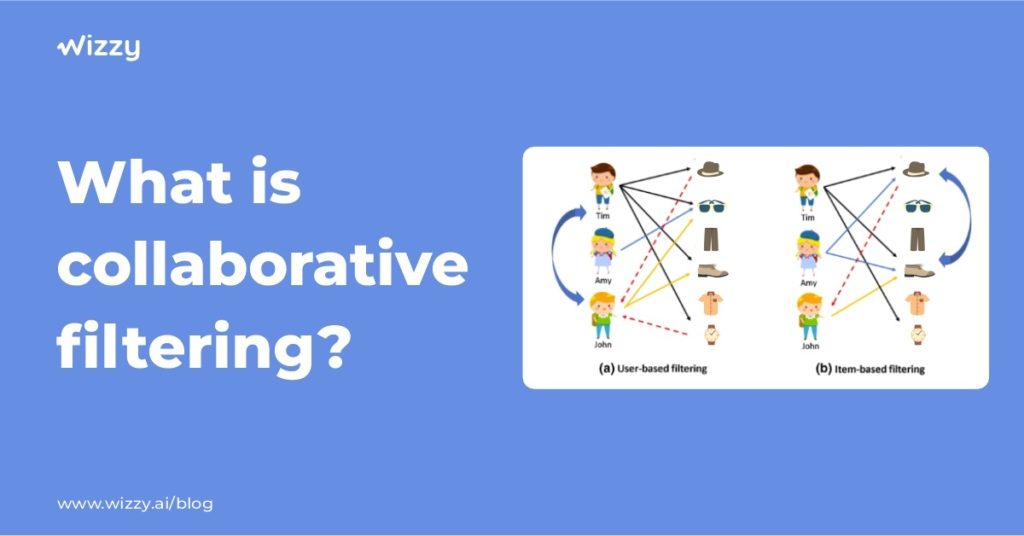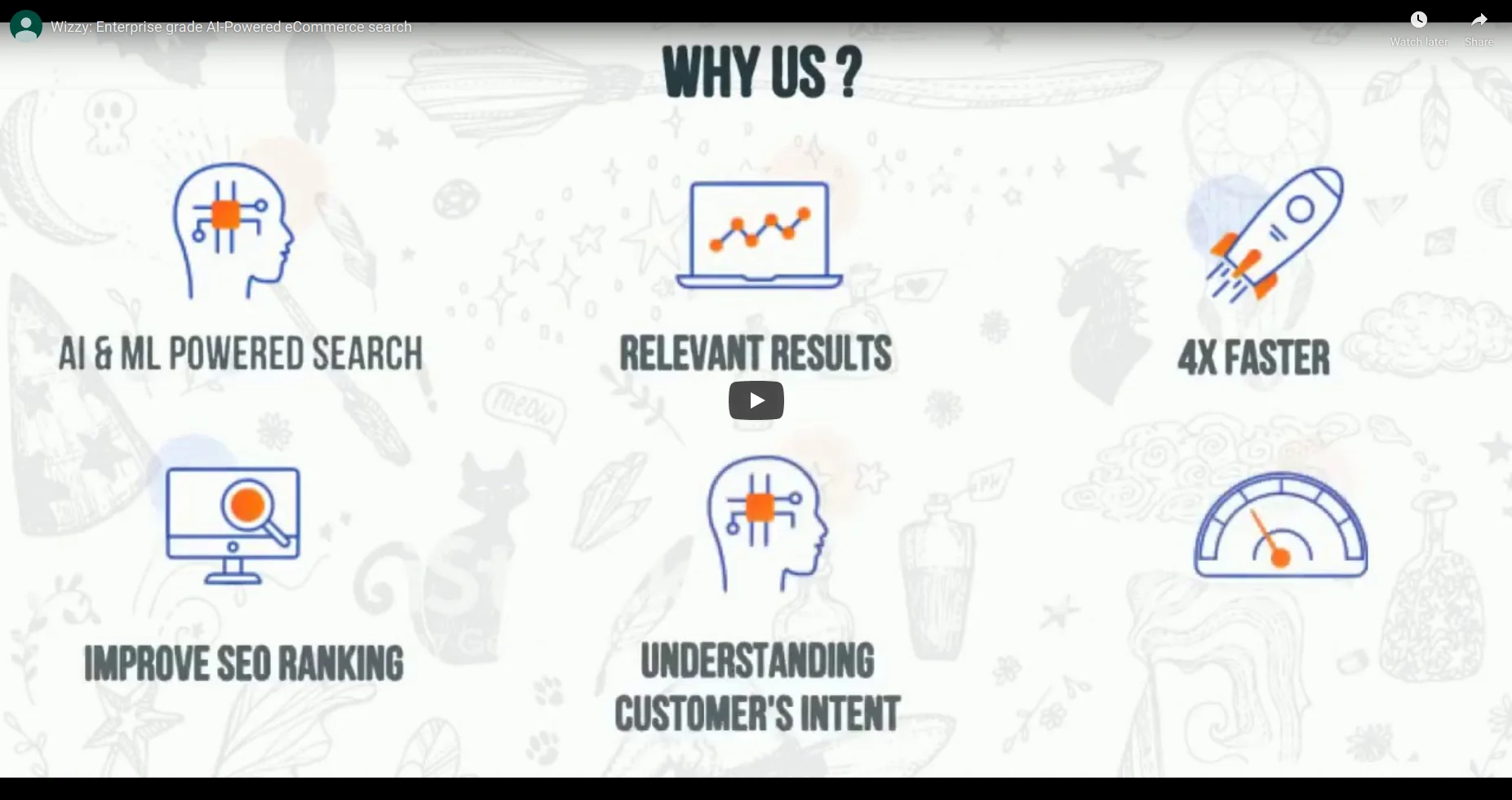
You might be wondering how Amazon became the world’s no. 1 eCommerce retail store in the world. Well, there are many minor details that Amazon keeps in mind to be at the top of their customer’s minds. Thanks to the latest technologies like AI and ML which tracks the exact customer behavior and helps all types of business in forming marketing campaigns and apps or site experience. Smart tools like Wizzy track the search analytics report and help you to make the right decisions on the products (internal linking). One of the most common ways for product recommendation is “collaborative filtering”. Today in this blog we will discuss the strategy behind the product recommendation system of Amazon and how you can adopt this strategy in your eCommerce store. First, let’s learn what a recommendation system is.
What is Merchandising?

The product that is automatically recommended to each user when the user interacts with your website or application is referred to as a recommendation system. For product recommendations, the recommendation system utilizes several scaling measures such as analytics reports, algorithms, user preference data, and even advanced technologies such as AI and ML. The recommendations can be tailored to an individual user or classified if many users exhibit similar behavior.
Recommendation systems are set up for several purposes customization, enhancing the user experience, measure the effectiveness of marketing campaigns, and so on. The system collects information and generates reports about certain products. Three things can be achieved from the reports:
- The items which are preferred by the users
- The users who will be affected by the recommendation system
- The list of previous users who already have interacted with the products
The data generated by the recommendation system are of 2 types
- Implicit: This data consists of users’ preferences on your website like clicks, navigation, searches, time spent on a particular page, page recommendations, and so on.
- Explicit: This data consists of user recommendations, feedback, and comments
Having a recommendation is an essential feature on your eCommerce website because in this market the competition is fierce.. eCommerce giants like Amazon and Alibaba use collaborative filtering systems for the recommendation of products. Let’s learn in brief what is collaborative filtering.
What is collaborative filtering?

Collaborative filtering tracks user interaction and shows product recommendations accordingly. The recommendations are based on the data collected by the system from previous interactions. The system assumes that the users who have previously agreed in their evaluation of a certain product will also agree with the same in the future. Amazon uses this same strategy in its product recommendation.
This is the exact system used by Netflix for movies and TV show recommendations. Let’s have a scenario in mind when you are setting up your account on Netflix. It requires certain field values like name, email id, and password, after that it asks you about your preference. The user has selected the following genres: comedy, action, drama, and so on, and the account creation is completed. Now on a weekend, you are looking for a movie to watch. Netflix shows you recommendations based on the genres selected by you.
The bulk of collaborative filtering systems makes use of the so-called similarity index-based method. In the neighborhood-based method, a selection of users is made based on how similar they are to the active user. The active user is deduced using a weighted average of the ratings of the chosen users.
There are 2 classes of collaborative filtering:
- User-based, which measures the user interaction of the targeted audience and the normal audience.
- Product-based, this measures the interaction of users between the targeted product and the normal product.
How can you adopt collaborative recommendations on your eCommerce store?
Well, the installation is pretty easy. eCommerce store owners can use smart tools like Wizzy which tracks the user’s preferences and recommends customized products to every user. The recommendations are based on the historical preferences of the users but what if the user has just set up the account?
While in this situation the products are recommended based on the region in which the user is setting up the account. The system assumes that the demographics of the users might be similar in a particular region. Collaborative filtering is the most commonly used recommendation system by experts. The system is fully based on calculated guesses. The main idea behind the system is to show the recommendations of the products based on the previous likings and purchasing history of the user. The system can be customized according to the user.

Wizzy uses cutting-edge technologies like AI and ML for an automatic recommendations. It tracks the user’s preferences and recommends products that are related to the user demographics. The recommendations of every user are different and customized according to user preferences.
Smart search bar tools like Wizzy are essential for your eCommerce store because they auto-recommend the products based on user preferences. Wizzy also generates reports regarding the search keywords. Store owners can easily measure the trends from effective marketing campaigns for your products. So what’s holding you back from adopting the innovative product recommendation system for your website? Install smart search bar tools like Wizzy that let you think out of the box.



